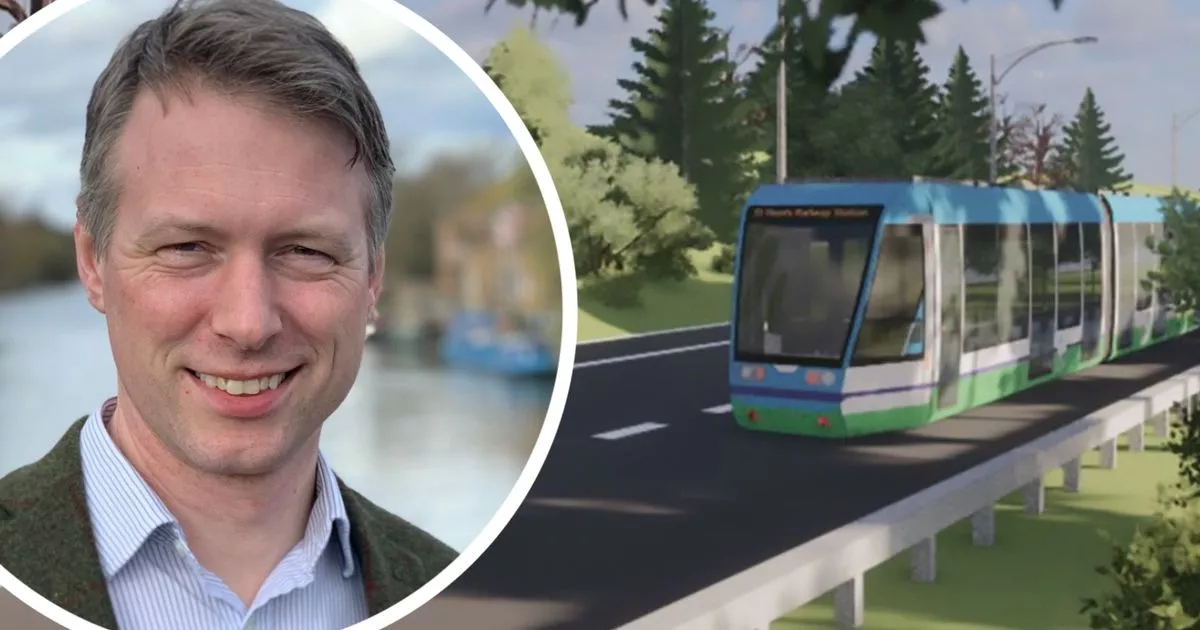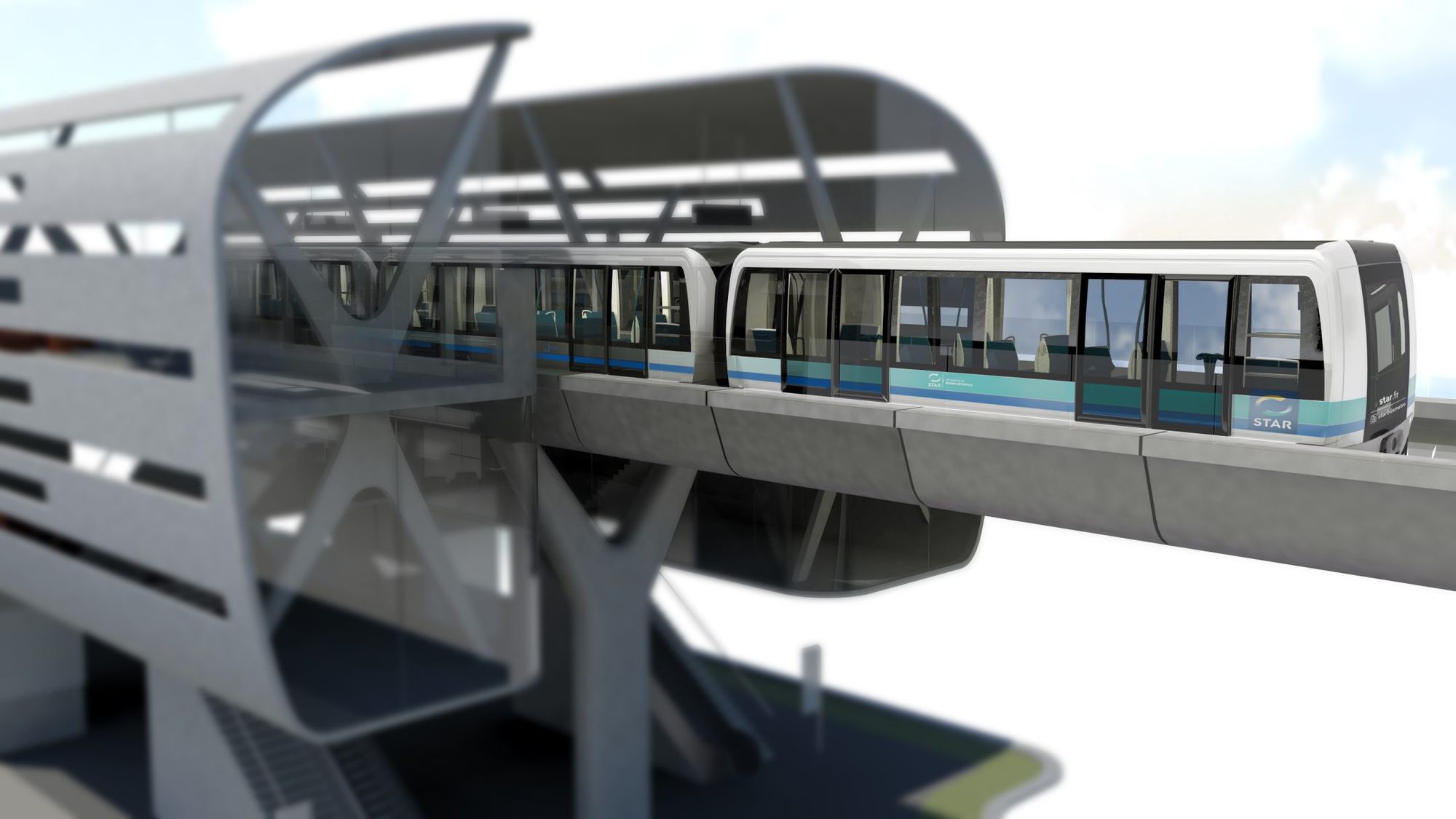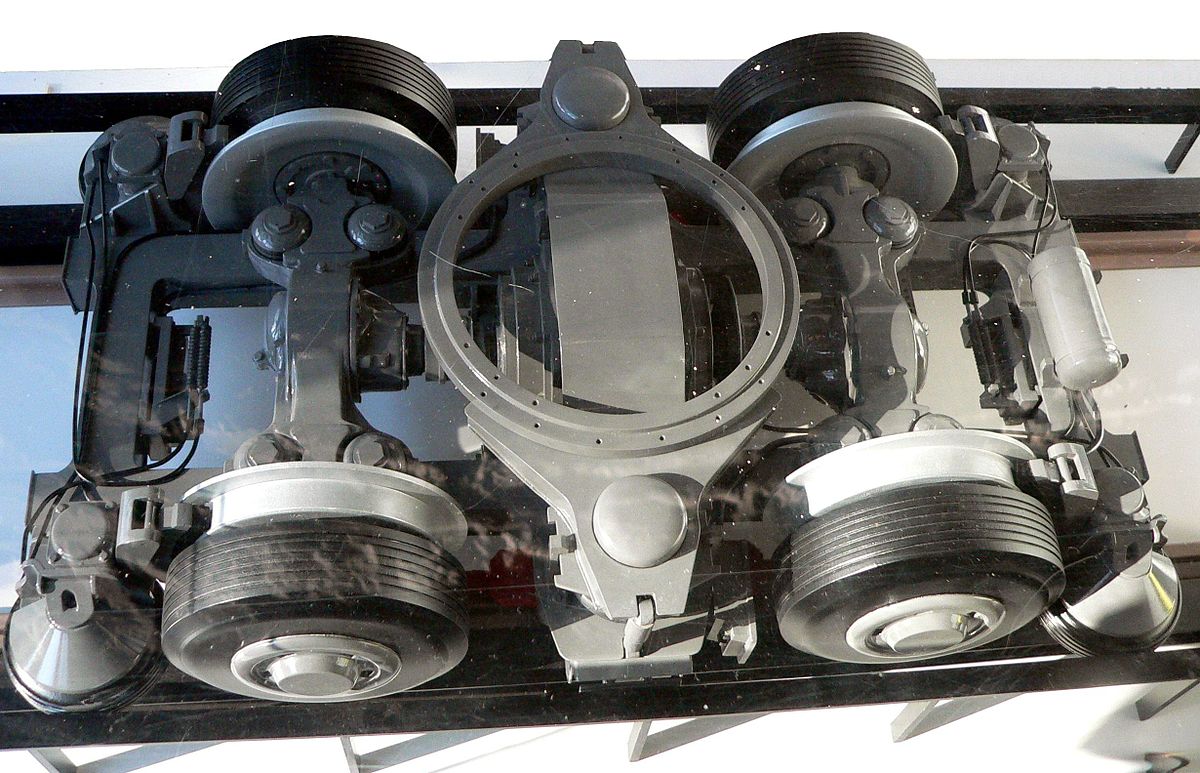whittlesfordok
Member
- Joined
- 20 Jan 2014
- Messages
- 101
A11 is Granta Science park
Bold, pioneering conceptual designs showcase potential for CAM innovation and a new public transport future
Three conceptual designs showcasing radical, innovative thinking which could help shape and transform how the Cambridgeshire Autonomous Metro (CAM) is delivered have been revealed.
The three consortiums of leading experts selected for the process have put forward three very different, thought-provoking conceptual designs for an in-the-round solution to CAM’s delivery. This includes the vehicle, the infrastructure, and how the system would operate.
The designs are intended help inform, challenge and inspire how CAM can realise its mission to be transformational for the future of the region, while remaining deliverable and offering value for money. The concept design challenge has in itself been an innovative process, searching for expertise across the widest possible market for the latest technologies and thinking for a new way of delivering public transport in the 21st Century, and for a region the size of Cambridgeshire and Peterborough.
While the design challenge was not intended to find an ultimate delivery solution for CAM, aspects of the designs and innovations demonstrated could be adopted as part of the next business case phase which begins in April.
Three lead suppliers developing the designs, Dromos Technologies, Egis and Mott MacDonald, brought in expert partners from a range of disciplines as part of their consortia, to help develop the wide-ranging elements of the CAM solution required.
Lars Herold, CEO of Dromos Technologies, said: “The Dromos Autonomous Network Transit (ANT) approach offers a world-leading innovative transport solution for CAM, which will define Cambridgeshire & Peterborough as a pioneer in future mobility.
“With up to 84 stops across the CAM network, Dromos delivers significant passenger benefits. Passengers travel non-stop in their own Dromos vehicle, without having to share with other passengers. The system runs on-demand, 24/7, 365 days a year. Passengers request a CAM ride through their own devices, or from electronic kiosks at CAM stops, with ride availability in under two minutes any time of day. The vehicle offers generous interior space, work tables, wifi and space for bikes and luggage. Because vehicles travel non-stop, journey times are short and reliable. Vehicles and stops are fully wheelchair accessible. Dromos offers a comfortable and individualised transport experience accessible to all.
The Dromos ANT solution delivers rail system levels of capacity for CAM with space requirements and construction time compared with traditional mass transit systems. As a clear demonstration of these benefits, Dromos has proposed a concept design for CAM, which can be delivered quickly. It’s highly flexible, with options for tunnels, underpasses, elevated lanes or segregated surface alignment, making it easy to implement to suit the demands of the urban or rural landscape. Moreover it offers significant environmental benefits and is carbon neutral at point of use. Simply put, it’s what the future of public transport looks like.”
Egis’s Gilles Autuori, Executive Vice President – Head of Railways & Urban Transit Projects for Europe and APAC, said:
“Egis are pleased to present our contribution to the concept proposals for the CAM network. Based on our experience of similar projects worldwide we offer an alternative solution that we believe to be scalable, cost effective, environmentally friendly and sustainable and which places the user experience at the heart of the system. We propose innovations across the entire scope of the infrastructure, vehicle and operational concepts and enhanced connectivity by incorporating improvements for walking, cycling and modal interchange as well as integrated first/last mile services achieving improved coverage and accessibility to the system.
“Our roadmap to full driverless operation provides a logical progression allowing for efficient and safe transitioning to the ultimate vision of an on-demand, customer responsive, seamless journey experience.”
Stephen Luke, Practice Leader for Rapid Transit at Mott MacDonald said:
“This complete concept design brought together expertise from across Mott MacDonald and specialist consultants Maynard, MTR, Podaris and Transport Design International.”
“Our design fully considers all the elements of how the CAM should be delivered: user experience, vehicle, infrastructure, operations, sustainability and finance and funding. The golden thread running through our concept is the clear focus on improving people’s lives: we want to provide a community-based, sustainable, accessible mode of transport that improves the liveability of the region and that provides skilled jobs in manufacturing and maintenance.”
“Our concept features CAM stations that are reimagined as community-centred hubs; spaces that serve the public. We have put forward a modular construction approach, which will not only use local technology and manufacturing expertise but will also allow for each hub to the constructed in response to the specific and evolving needs of the local community.”
“The team at Transport Design International has designed a fully autonomous, battery powered, two-car vehicle, accessible to all and which will provide smooth and fast transport. The bidirectional all-wheel design makes it highly suitable for the towns, cities and tunnels of Cambridgeshire.”
“The collaborative environment we established at the start of this process means that we have been able to draw upon the very best specialist expertise in transit design and create a credible, scalable and flexible concept using a blend of new and proven technology, that will ultimately benefit the people of Cambridgeshire and Peterborough.”
Mayor James Palmer said:
“We have challenged some of the brightest and best minds in infrastructure to show us the art of the possible. The resulting designs show the vast potential for CAM to deliver something truly groundbreaking, transforming our economy and people’s lives, through a system which is world leading. To bring world class public transport to a region of our size and population, we have to be bold and apply new thinking. These designs give us a powerful insight into what can be achieved when you are prepared to challenge convention.
“Cambridgeshire and Peterborough is a place founded on breakthrough ideas. This is the perfect place to be a pioneer in the future of transport. Many similarly sized cities and regions globally are themselves facing similar infrastructure challenges to us. It is vital to invest in our future infrastructure needs now, not in ten years when it will be too late and we fall behind our international competitors who had the foresight to act sooner.
“And what these designs also show is how flexible and adaptable to the needs of our region CAM can be. With innovative thinking like this, we can extend the network further into our region. Calls for CAM in places like Peterborough and Chatteris have already been made. As it develops CAM will grow and evolve, reaching new people and places, and keep up with advancing technologies to remain future ready.
“High quality infrastructure is expensive. The welcome upgrade of 21 miles of the A14 between Huntingdon and Cambridge cost £1.5 billion. By comparison CAM will offer about 90 miles of high quality, regionwide public transport, and at a potential cost of nearer £2 billion, according to some of these designs. That, alongside the cost to the economy of failing to act on putting in the right infrastructure, is another reason why the case for CAM is compelling.”
These are not intended to be ultimate design solution for CAM. What they aim to do is inform, challenge and inspire how CAM can realise its aim to be transformational for the future of the region, while remaining deliverable and offering value for money.
Can we not just send them some pictures of trams and be done with it?
They don't have to be owned by a sober driver with appropriate skills and valid insurance, and they operate from public stops, so while, realistically, they may not have the capacity to deal with peaks in demand, they are theoretically available to anyone who might want to ride them, so the suggested system, however impractical, still qualifies as public transport.And the "pods" barely have any advantage over private cars.
They don't have to be owned by a sober driver with appropriate skills and valid insurance, and they operate from public stops, so while, realistically, they may not have the capacity to deal with peaks in demand, they are theoretically available to anyone who might want to ride them, so the suggested system, however impractical, still qualifies as public transport.
Gadgetbahn, Gadgetbahn, Gadgetbahn everywhere....
Can we not just send them some pictures of trams and be done with it?
I first saw a proposal for this 13 years ago. It looks like the person who dreamt it up has somehow got into the ear of the Mayor who wants to run with it. But my goodness it’s a brave person who starts something like this. Especially with a £4bn price ticket.

It's the mayoral election in May but I suspect Palmer will keep his job
Parking at a P&R and pedalling or escootering would seem a better approach but it would need cycleways fixing from Milton and Newmarket ones because a surge in commuters will overload the current official routes out of them and could unofficially remodel the more direct routes by weight of numbers.I don't think bus quality is a major factor (the P&R buses are quite highly specced), more that the buses just get stuck in all the same traffic and suffer from reliability issues on the most congested days.
If you want a tram like solution, use a tram.
Sage advice, if only we had listened 18 years agoDon't squander huge sums on R&D
In France, route testing of Rennes Metro Line B has commenced. This is, I believe, the first proper CityVAL system rather than previous VAL iterations, so one to watch, but as configured today it is not yet really a proven or mature technology. Reduced speed manual driving is illustrated in the linked video and what looks like temporary fixed block signalling (presumably the CBTC not commissioned yet). Note the vehicles are rubber-tyred and steered using the Translohr centre rail guidance system. A twin ground-level conductor supplies traction power, seemingly continuous in the particular application although, in other videos of depot vehicle testing, fairly long gaps are illustrated through junctions so I suspect there is at least some energy storage capability onboard, which may also be an important factor in meeting the manufacturer's system reliability claims.If you want a tram like solution, use a tram.
If you want a Metro, use the Hitachi Italy autonomous metro, or CityVAL.
Don't squander huge sums on R&D
Here's the current official Siemens page for the Rennes project, including a depot running video:Métro Ligne B de Rennes : Premiers essais de roulage réalisés avec succès sur le viaduc mercredi 20 janvier 2021 (vidéo réalisée par la Ville de Rennes)

A metro to support the growth of Rennes
The city of Rennes has chosen Cityval to support its growth. Siemens Mobility provides the Cityval automatic metro, a turnkey transport solution with unparalleled security, efficiency and modularity.
In France, route testing of Rennes Metro Line B has commenced. This is, I believe, the first proper CityVAL system rather than previous VAL iterations, so one to watch, but as configured today it is not yet really a proven or mature technology. Reduced speed manual driving is illustrated in the linked video and what looks like temporary fixed block signalling (presumably the CBTC not commissioned yet). Note the vehicles are rubber-tyred and steered using the Translohr centre rail guidance system. A twin ground-level conductor supplies traction power, seemingly continuous in the particular application although, in other videos of depot vehicle testing, fairly long gaps are illustrated through junctions so I suspect there is at least some energy storage capability onboard, which may also be an important factor in meeting the manufacturer's system reliability claims.
Here's the current official Siemens page for the Rennes project, including a depot running video:

Cityval Rennes B
The new generation Cityval in Rennes sets new standards for passenger comfort, cost efficiency and overall availability oin modern passenger transportation.www.mobility.siemens.com
NeoVAL, the general technology 'platform' incorporating AirVAL and CityVAL products is all you can get today in the 'VAL space'! Previous versions with the side guidance/power supply are no longer available as new systems.Well any version of VAL is acceptable!
NeoVAL, the general technology 'platform' incorporating AirVAL and CityVAL products is all you can get today in the 'VAL space'! Previous versions with the side guidance/power supply are no longer available as new systems.
The Lausanne M2, like all the Paris rubber-tyred lines, differs from a VAL system in having continuous conventional rails as well as the wider tyre running surface as components of its guideway system. The rails and corresponding steel wheels on the cars are used as emergency backup if a tyre deflates and for switching at junctions where the level of the tyre runway drops to allow conventional point guidance via the steel wheels' flanges. Presence of the heavy, albeit little-used, rail wheel axles in addition to the tyred wheels in the bogies of the Paris Metro derived technology leads to higher car weight than in many other guided rubber tyre systems such as VAL in its various iterations and other manufacturers' airport people mover products.You could follow the Lausanne example and buy yourself a cut down version of Météor however.

Not too dissimilar from most rubber-tyred metro systems.In France, route testing of Rennes Metro Line B has commenced. This is, I believe, the first proper CityVAL system rather than previous VAL iterations, so one to watch, but as configured today it is not yet really a proven or mature technology. Reduced speed manual driving is illustrated in the linked video and what looks like temporary fixed block signalling (presumably the CBTC not commissioned yet). Note the vehicles are rubber-tyred and steered using the Translohr centre rail guidance system. A twin ground-level conductor supplies traction power, seemingly continuous in the particular application although, in other videos of depot vehicle testing, fairly long gaps are illustrated through junctions so I suspect there is at least some energy storage capability onboard, which may also be an important factor in meeting the manufacturer's system reliability claims.
Here's the current official Siemens page for the Rennes project, including a depot running video:

Cityval Rennes B
The new generation Cityval in Rennes sets new standards for passenger comfort, cost efficiency and overall availability oin modern passenger transportation.www.mobility.siemens.com
In France, route testing of Rennes Metro Line B has commenced. This is, I believe, the first proper CityVAL system rather than previous VAL iterations, so one to watch, but as configured today it is not yet really a proven or mature technology. Reduced speed manual driving is illustrated in the linked video and what looks like temporary fixed block signalling (presumably the CBTC not commissioned yet). Note the vehicles are rubber-tyred and steered using the Translohr centre rail guidance system. A twin ground-level conductor supplies traction power, seemingly continuous in the particular application although, in other videos of depot vehicle testing, fairly long gaps are illustrated through junctions so I suspect there is at least some energy storage capability onboard, which may also be an important factor in meeting the manufacturer's system reliability claims.
Here's the current official Siemens page for the Rennes project, including a depot running video:

Cityval Rennes B
The new generation Cityval in Rennes sets new standards for passenger comfort, cost efficiency and overall availability oin modern passenger transportation.www.mobility.siemens.com
What does this do for derailment containment? The parapet appears to be non-structural so this is entirely reliant on the rail guidance to keep it on the viaduct.NeoVAL, the general technology 'platform' incorporating AirVAL and CityVAL products is all you can get today in the 'VAL space'! Previous versions with the side guidance/power supply are no longer available as new systems.
At the risk of getting laughed at, there is always the Japanese or Chinese low speed maglev systems.
Not as mature as the rubber tyred or light rail options, but potentially quite useful here - and still considerably less pie in the sky than the options being proposed by the people in this competition!
